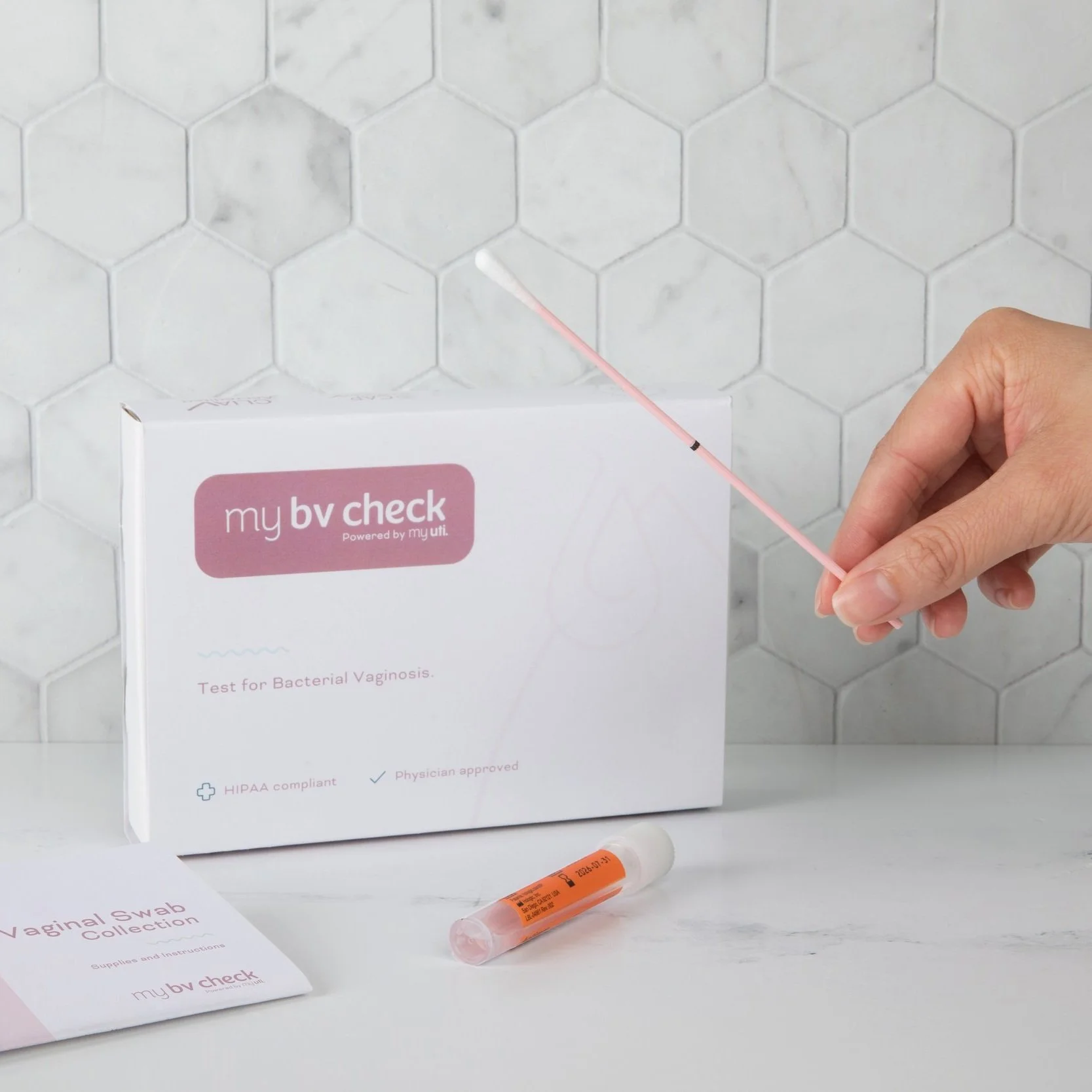What Is Bacterial Vaginosis (BV)? Causes, Testing, Treatment, and What It’s Not
Bacterial Vaginosis (BV) is one of the most common yet misunderstood vaginal conditions. If you've ever dealt with unusual discharge, a strong odor, or recurring infections that just won't go away, BV might be the culprit. But here's the tricky part; BV symptoms often overlap with other conditions like yeast infections or even STIs, which means it’s frequently misdiagnosed or mistreated.
In this post, we’ll unpack what causes BV, how to test for it (and why that matters), what treatment looks like, and how to tell the difference between BV and similar conditions. Plus, we’ll show you how the MyUTI BV Check Test can help take the guesswork out of vaginal health.
What Causes BV?
BV isn’t caused by “bad hygiene” or a single type of bacteria, it’s the result of an imbalance in your vaginal microbiome.
Your vagina is home to a mix of good and bad bacteria. In a healthy vaginal environment, lactobacilli (good bacteria) dominate, keeping the pH balanced and protecting against pathogens. BV happens when that balance tips and anaerobic bacteria overgrow, outnumbering the lactobacilli.
Common triggers include:
New or multiple sexual partners
Douching or using scented vaginal products
Hormonal fluctuations (menstruation, pregnancy, menopause)
IUDs or other foreign bodies
BV is not technically a sexually transmitted infection (STI), but sexual activity and partner microbiomes can influence your vaginal flora.
Symptoms of BV
Not everyone with BV experiences symptoms, but when they do occur, they can include:
Thin, gray or white discharge
Strong “fishy” odor, especially after sex
Vaginal itching or irritation (less common)
Slight burning during urination
Because many of these symptoms also appear in yeast infections, UTIs, or STIs, it's easy to assume or misdiagnose based on symptoms alone.
Why Testing Matters
One of the biggest barriers to proper treatment is guesswork—especially with at-home remedies or over-the-counter antifungals.
BV requires specific antibiotic treatment and won’t respond to yeast infection treatments like fluconazole or Monistat. If you treat the wrong condition, not only will symptoms persist, but your vaginal microbiome could be further disrupted leading to recurrence, inflammation, or new infections.
Testing helps you rule in (or rule out) the true cause—so you can stop treating symptoms in the dark.
Other Conditions That Can Be Mistaken for BV
Several other vaginal or pelvic health conditions can look like BV:
Yeast Infections: overlapping symptoms but their causes and treatments are very different.
Trichomoniasis (Trich): A common STI with frothy discharge and strong odor
Vaginal atrophy: Thinning and dryness due to low estrogen (especially after menopause)
Lichen sclerosus or eczema: Cause irritation, itching, and discharge
UTIs or interstitial cystitis: May cause burning and urgency without vaginal discharge
How Is BV Treated?
BV is usually treated with oral or vaginal antibiotics—most commonly metronidazole or clindamycin.
Treatment is often quick and effective, but recurrence is frustratingly common. Around 50% of people experience another BV episode within 6–12 months.
Tips to reduce recurrence:
Avoid douching or harsh soaps
Stick to unscented, pH-balanced products
Consider probiotics that support vaginal health
Use condoms or limit partner changes if recurrence is an issue
What BV Can Make You Susceptible To
BV isn’t just uncomfortable—it can increase your risk for other health issues, especially if left untreated.
Increased susceptibility to STIs, including HIV, gonorrhea, and chlamydia
Pelvic Inflammatory Disease (PID), a serious infection that can lead to infertility
Preterm labor or low birth weight in pregnant individuals
UTIs, due to inflammation and disruption of the urogenital microbiome
This is why getting tested and treated matters—not just for symptom relief, but for long-term reproductive health.
Bacterial Vaginosis is more than just a nuisance—it can impact your health, relationships, and peace of mind. But with the right tools, BV doesn’t have to stay mysterious or recurring.
The MyUTI BV Check Test gives you fast, lab-quality results for BV, yeast, and Trich, so you can take the guesswork out of vaginal health and get on the right path to treatment. No shame. No stigma. Just science.

